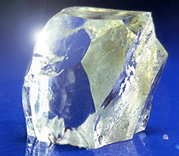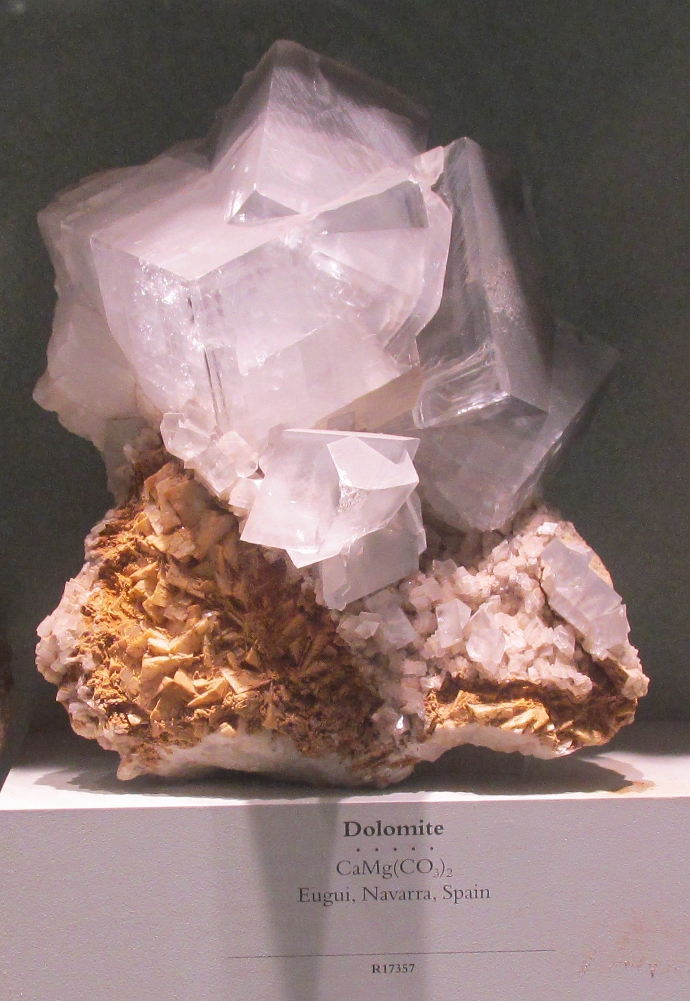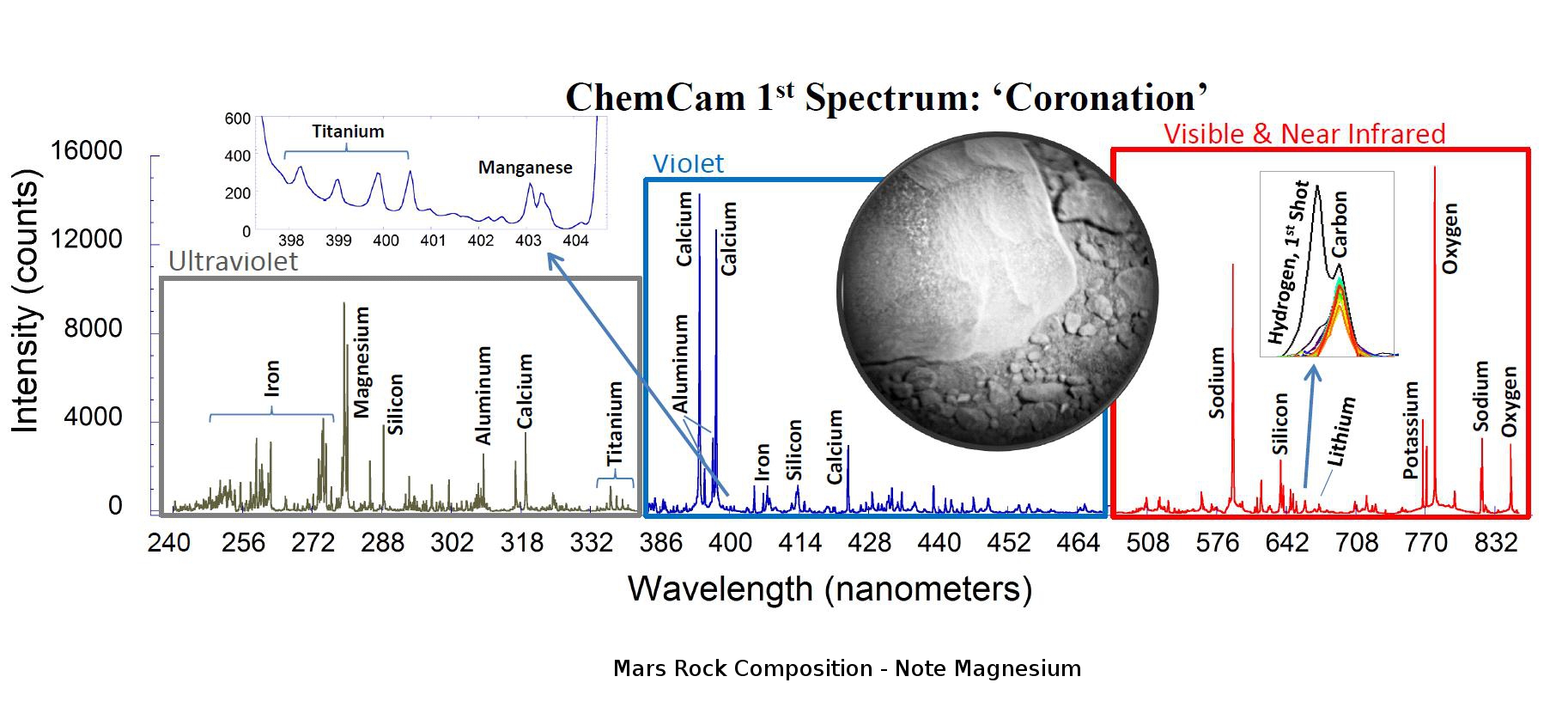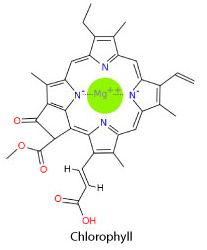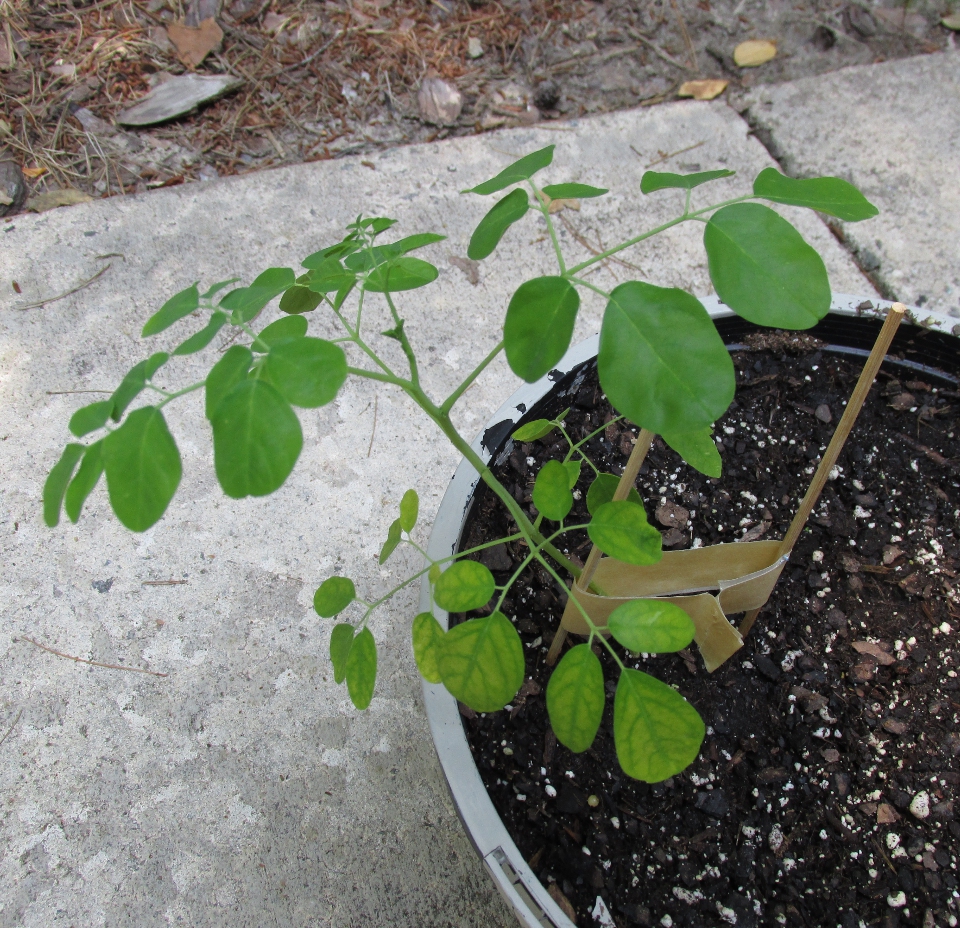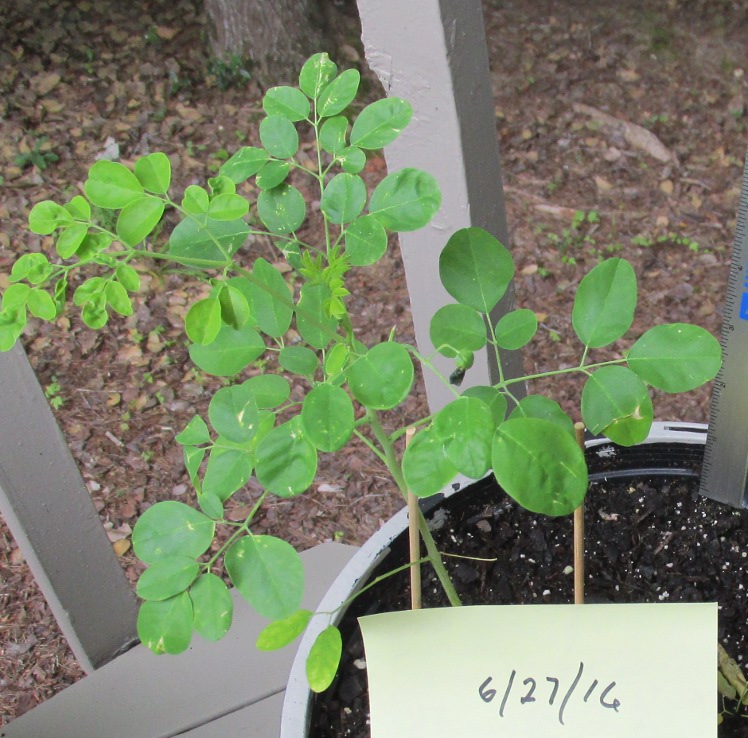|
IPRS, Inc.
|
||
|
|
The Magnesium Project - Fun Facts
Magnesium in Nature
Magnesium in the Universe Magnesium is not just present here on earth. It is also found in outer space. It occurs in meteorites, moon rocks and mars rocks. Analysis of rocks on Mars revealed the following. Note the spike for Magnesium in the ultraviolet band on the left.
Selected Minerals from Outer Space
Animals, Humans, and Microbes All living organisms have numerous metabolic pathways and similar regulatory mechanisms involved in assuring survival. We find Mg-activated enzymes and pathways in micro-organisms, plants, and all the animals including humans. Research in each organism can provide useful insights in possible mechanisms used by others. Mg in Plants Chlorophyll is one of the main pigments in plants that is responsible for capturing light energy from the sun and converting it into chemical energy through the process of photosynthesis. Magnesium is a principal component of the chlorophyll molecule as seen in the chemical structure below. Without Mg, no life as we know it.
http://treelite.com/articles/images/Chlorophyll-Hemoglobin.jpg An example of a plant rich in chlorophyll is the Moringa oleifera depicted below. Note the lower leaves showing chlorophyll deficit. Subsequently, leaves became fully and uniformly green after adding Mg supplements to the soil. The fast growing Moringa is native to tropical parts of Africa and India and is an excellent source of nutrients to indigenous people.
Even in the agricultural/horticultural industry Mg is often overlooked as being important for normal development. A popular brand of fertilizer contains numerous nutrients and micro-nutrients, yet omits magnesium. It is a wonder, it works as well as it does. If in doubt about whether your favorite plants are getting sufficient Mg, you can use Epsom salts (1 teaspoon per gallon water) and/or apply dolomitic lime instead of regular lime (Calcium carbonate). Mg in Animals Note that a national survey in the United States by the USDA has indicated that over 35% of the population is likely deficient in Mg. It is likely that there are deficits in Mg in our pets and livestock as well unless their diets are artificially enriched or they have an abundance of green plants in their diet. Mg in Micro-organisms It is well known that lower life forms including bacteria and fungi are also dependent upon Mg for normal growth. If we knew more about how these organisms handle Mg, perhaps we could find ways to regulate their growth without having to resort to expensive and sometimes toxic anti-microbials. Summary One finds Mg-activated enzymes and pathways in plants as well as all the animals from the lowest life forms to the highest including humans. Research in each organism can provide useful insights into possible mechanisms used by each to absorb, transport, utilize and regulate it. This in part is what the Magnesium Project is about. Help us increase awareness of this fascinating element. -----------------------------------
© 2016 to 2024, All Rights Reserved, IPRS Inc. |
